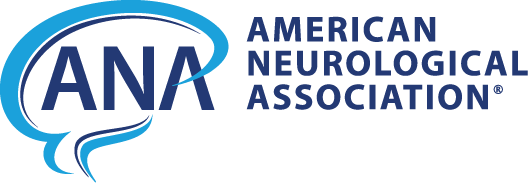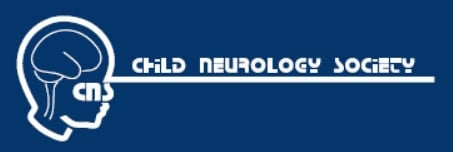Author Guidelines
SCOPE
The Annals of Clinical and Translational Neurology (ACTN) publishes articles of broad interest with potential for high impact in understanding the mechanisms and treatment of diseases of the human nervous system. All areas of clinical and basic neuroscience, including new technologies, cellular and molecular neurobiology, population sciences, and studies of behavior, addiction, and psychiatric diseases are of interest to the journal. ACTN is particularly interested in clinical trials and other large-scale studies that inform the practice of medicine. Trials reporting negative data will be considered. The scope of ACTN also includes topics of particular significance in neurologic education as well as other topics of interest to the clinical neuroscience community. In addition to manuscripts from established investigators, ACTN will welcome scholarly work, points-of-view, and case studies from residents, fellows and medical students.
EDITORIAL POLICIES
Contact
To ensure that your communications for all other matters are properly routed to the appropriate Editors, correspondence regarding your submission must be directed to Keegan Brewster, Managing Editor at [email protected]. Do not contact the Editor-in-Chief, Associate Editors, or members of the Editorial Board.
General
Submissions must not be under consideration by any other journal or published previously (apart from abstracts).
Ethical Compliance
Experimental studies of human subjects require that the protocol has received prior approval by the appropriate institutional review board, and that informed consent was obtained from each subject. This approval must be noted in the Methods.
Animal experimentation must receive institutional approval and be conducted in accordance with the United States Public Health Service's Policy on Humane Care and Use of Laboratory Animals, and this approval must be stated in the Methods. States must include evidence that human and animal research complies with the standards enforced in the country of origin.
We require documentation of either human subjects or animal protocol approval at the time a paper is submitted. Authors should upload this in the system with the designation, “Additional File NOT for Review and NOT for Publication”.
Following publication authors will be required to make available any new nucleic acid constructs, recombinant organisms, antibodies, or other unique reagents and to make their data available to other investigators for the purpose of verifying and replicating results. The Editors strongly encourage authors to make their data available to other investigators for other purposes, e.g., to deposit microarray data in a public repository, such as GEO or ArrayExpress.
Data Sharing Expected
Statement Confirming Availability or Absence of Shared Data Required: ACTN expects that available data supporting the results in the paper will be archived in an appropriate publicly accessible repository and authors are required to provide a statement in the paper to confirm the availability or the absence of shared data. The statement should describe how the data can be accessed, and include a persistent identifier (e.g., a DOI for the data, or an accession number) from the repository where you shared the data. You may use the Standard Templates for Author Use or draft your own. Whenever possible, the scripts and other artefacts used to generate the analyses presented in the paper should also be publicly archived. If sharing data compromises ethical standards or legal requirements, then authors are not expected to share it, but should indicate as such in the required statement.
Clinical Trials
Although ACTN does not advocate one particular registry, clinical trials must be registered in a database that meets the requirements set forth by the ICMJE: (1) The registry must be publicly accessible. (2) It must be open to all registrants and managed by a not-for-profit group. (3) The registry must have a mechanism to guarantee accuracy and validity of the information submitted. (4) The registry must adhere to the ICMJE mandates described at their website: http://www.icmje.org/recommendations/browse/publishing-and-editorial-issues/clinical-trial-registration.html. Additional information can be found at: http://www.icmje.org/about-icmje/faqs/clinical-trials-registration/
Clinical trial reports must be written in accordance with the CONSORT reporting guidelines.
Credits and Permissions
Upon acceptance, we will require (1) notice of informed consent; (2) releases to publish photographs of recognizable persons; and (3) written permission to use non-original material (including quotations exceeding 100 words or any table / figure) from both author and publisher of the original material. No article will be published without all required permissions. Credit the source in a text or table footnote, or in a legend.
Conflict of interest
ACTN is compliant with the International Committee of Medical Journal Editors (ICMJE) recommendations regarding conflict of interest disclosures. All authors are required to report the following information with each submission: (1) Financial associations with commercial entities that provided financial support for the work reported in the submitted manuscript. The time frame for this disclosure covers the duration of the work itself, from conception and planning to the present. (2) Financial associations with commercial entities that could be viewed as having an interest in the general area of the submitted manuscript. All sources of revenue relevant to the submitted work that accrued either directly to you or to your institution on your behalf should be disclosed. The time frame for this disclosure covers the 36 months prior to submission of the manuscript. (3) Financial associations involving spouses or children under 18 years of age. (4) Non-financial associations that may be perceived as relevant to the submitted manuscript, including personal, professional, political, institutional, religious, or other associations that may be perceived as relevant. This information will be acknowledged at publication. Rejection of a manuscript or retraction may occur if undisclosed financial interests are found after publication.
ACTN requires that authors follow the International Committee of Medical Journal Editors (ICMJE) "Recommendations for the Conduct, Reporting, Editing and Publication of Scholarly Work in Medical Journals."
Artificial intelligence tools
Artificial intelligence generated content (AIGC) tools—such as ChatGPT and others based on large language models (LLMs)—cannot be considered capable of initiating an original piece of research without direction by human authors. They also cannot be accountable for a published work or for research design, which is a generally held requirement of authorship, nor do they have legal standing or the ability to hold or assign copyright. Therefore—in accordance with COPE’s position statement on AI tools—these tools cannot fulfill the role of, nor be listed as, an author of an article. If an author has used this kind of tool to develop any portion of a manuscript, its use must be described, transparently and in detail, in the Methods or Acknowledgements section. The author is fully responsible for the accuracy of any information provided by the tool and for correctly referencing any supporting work on which that information depends. Tools that are used to improve spelling, grammar, and general editing are not included in the scope of these guidelines.
Transfers from Annals of Neurology
ACTN often provides rapid review of submissions that its sister journal, Annals of Neurology is unable to publish due to space or priority. Authors of such papers will be offered the option of having the paper, along with any related peer reviews, automatically transferred for consideration by the Editor of ACTN. If reviewers have already comments on the paper, authors will be required to revise and respond to those comments at the time of transfer, which will improve the turnaround time to decision. Although there is no strict deadline for completing a transfer, the journal generally prefers to receive transfers within six months of decision in Annals.
|
Submission Type |
Length (words)1 |
Abstract Format |
|
Research Article |
4,500 |
Subheadings, 250 words |
|
Brief Communication |
1,500 |
No subheadings, 100 words |
|
Review Article |
4,000 |
No subheadings, 250 words |
|
Point of View |
3,500 |
N/A |
|
Case Study |
1,500 |
No subheadings, 100 words |
|
Neurological Progress |
3,000 |
Subheadings, 250 words |
|
Editorial |
1,000 |
N/A |
|
Letter to the Editor (and invited Replies)2 |
400 |
N/A |
|
interACTN Case* |
2,500 |
N/A |
1This does not include the abstract, references, or figure legends.
2Only letters addressing articles previously published in ACTN will be considered. Letters are welcome within four months of the issue publication of the original article – and not thereafter.
The Journal does not accept commentaries about publications in other journals. Research Articles masquerading as letters will be rejected.
*InterACTN Case Submissions
These are educational patient cases featured in interACTN.org that will take users through a case history and the process of localization, diagnostic testing decisions and interpretation, and differential diagnosis. The interactive format allows learners to explore and test their knowledge. (Once the full case is posted to interACTN.org, a citable summary of the case will be published in ACTN.) Figures or images such as radiology images, EEG or EMG sections, or pathology images should be included when appropriate with patient identifiers removed. These should be included as a separate Word or PowerPoint document. There should be a caption that includes the description of the image or study and a “read” or “report” on the image or study. Snapshots of relevant sections of imaging or studies are appropriate rather than including the full study. The discussion section allows the author to educate the user about the diagnosis while highlighting the unique and interesting aspects of the case. Cases will be selected based on their educational value, and authors are invited to submit both common as well as rare conditions that have value for learners at all levels of training and beyond.
- Authors must use the interACTN Case template file available here.
- If the Case submission is accepted, the files will be shared with the interACTN team so that production can begin. Meanwhile, the authors will be required to provide a Case Summary, which is what will publish in the journal with a DOI after the case is posted on interACTN.org. The template for a Case Summary is available here.
- For more information about interACTN, visit: http://interactn.org/
- Optional / Suggested:
Please submit 1-3 multiple choice questions relevant to any aspect of the case, which can be inserted along the way. These can be questions about localization, diagnostic testing decisions, diagnosis, and differential, etc. For at least one multiple choice question, pathways for each wrong answer with 1-2 additional questions that will lead the reader back to the correct answer are preferred, but not mandatory. For example, in a case in which the patient has Guillain Barre syndrome and respiratory compromise, what is the next best course of action? (see here)
CME Information for the 2020 interACTN Case Presentations
Eligible ANA interACTN cases are designated for AMA PRA Category 1 Credit(s)™. The system to claim CME will open at the end of the year following the last case of each calendar year. You will have the ability to indicate the cases for which you are seeking credit in one simple evaluation.
The American Neurological Association is accredited by the Accreditation Council for Continuing Medical Education (ACCME) to provide continuing medical education for physicians.
Completion of this accredited CME activity meets the expectations of an Accredited Safety or Quality Improvement Program (IA_PSPA_28) for the Merit-based Incentive Payment Program (MIPS).
The American Neurological Association designates this activity a maximum of 6.0 AMA PRA Category 1 Credit(s)™. Physicians should claim only the credit commensurate with the extent of their participation in the activity.
The planners and faculty for this activity have no relevant relationships to disclose unless listed below.
Tables:
Tables should be cited in order of appearance. Please do not repeat table callouts more than twice in a paragraph. Place callouts in parentheses: (Table 1), (Tables 1 and 2), (Tables 1-4). Type tables double-spaced on pages separate from the text, after any figure legends. Number pages consecutively with text and provide a table number and title for each. Please hold the length of each table to one standard-sized manuscript page (in portrait orientation). If the material cannot fit on one page, please format it as supplemental material instead. Tables should be numbered in order of citation in the text. Data in tables should not duplicate material in the text or illustrations.
Figures:
Figures should be cited in order of appearance. Please do not repeat figure callouts more than twice in a paragraph. Place callouts in parentheses: (Fig 1), (Fig 1 and 2), (Fig 1-4), (Fig 1A to C).
2. As a general rule of thumb, images that contain text and line art (graphs, charts, maps, etc.) will reproduce best if saved as EPS or PDF. If you choose this option, it is important to remember to embed fonts. This ensures that any text reproduces exactly as you intend.
3. Images that contain photographic information are best saved as TIFF or PNG, as this ensures that all data are included in the file. JPEG (Joint Photographic Experts Group) should be avoided if possible, as information is lost during compression; however, it is acceptable for purely photographic subjects if the image was generated as a JPEG from the outset (many digital cameras, for example, output only in JPEG format).
4. If you are not sure which format would be the best option, it is always best to default to EPS or PDF as these are more likely to preserve the high-quality characteristics of the original.
5. Please ensure all images are a minimum of 600 dpi.
Figure dimensions should be limited to either 8cm across (1 column width for graphs, MRI scans, etc.) or 17cm across (full page width for schematics or flow charts, and figures composed of multiple photomicrographs, etc.). Single-column width artwork is preferred; please stack figure panels vertically whenever possible.
Vector-based figures (e.g. figures created in Adobe Illustrator) may be submitted in EPS format.
Color figures should preferably be submitted in RGB for online publication.
To ensure consistency between figures and legends, and to preserve conformity and neatness in style, please be sure your figure panels are labeled in uppercase letters (A, B, C, etc.) using a sans serif font (e.g. Helvetica). The font size should measure 10 points after the figure is reduced to the appropriate dimensions (8cm or 17cm). Any text within a figure (e.g. the axes of a graph) should be 7 points after final reduction.
To ensure that your digital graphics are suitable for print orders, please visit RapidInspector™ at http://rapidinspector.cadmus.com/wi/index.jsp. This free application will help you to inspect and verify appropriateness of your illustrations for commercial printing.
To create high resolution figures from Microsoft PowerPoint or Excel, you will have to (1) export the figure to a Post Script file (this is done through the print menu and requires Adobe Acrobat Professional); (2) using Adobe Photoshop, open the figure in 300, 600, or 1200 dpi resolution; (3) using the image size tool, adjust the dimensions of the figure to a maximum width of either 8cm or 17cm across; (4) save the file as a TIFF. If there are any issues, you may also send the files to us in their native file formats.
Please do not include extra text (including keys and headings) in the artwork; spell out keys and headings in the figure legend instead.
Please reduce negative space as much as possible, removing all excess white space from figures with multiple panels.
Photographs of recognizable persons should be accompanied by a signed release from the patient or legal guardian authorizing publication. Masking eyes to hide identity is not sufficient.
Please insert callouts to supplementary material in parentheses wherever necessary in the body of your text. Please number your supplementary content separately from the essential elements of your paper (e.g. Figure 1, Figure 2, Figure 3, Supplementary Figure 1, Supplementary Figure 2, Figure 4, etc.) and list all legends at the end of the manuscript file. You may submit supplementary tables, text and figures in Microsoft Word format (supplementary figures may be embedded in a Microsoft Word document).
SUBMISSION PROCESS
Decisions
All submissions are thoroughly vetted by Editors prior to peer review. ACTN is committed to providing a timely decision for every submission we receive. To accomplish this, we strictly enforce time limits for peer review and for editorial consideration. If authors require a decision within a restricted time frame (because of a competing paper from another group or similar problem, but NOT to meet a grant or promotion deadline), please contact the Editor-in Chief, John Kessler, at [email protected]. Notification of the disposition of each manuscript will be sent by e-mail to the submitting author on the day of decision. The timeframe from submission to first decision ranges from one day to six weeks.
Instructions
Authors are required to submit manuscripts through our online submission website at https://wiley.atyponrex.com/journal/ACN3. If for any reason you are unable to do so, please contact the Managing Editor to discuss possible alternate arrangements. Authors and co-authors may view the status of the manuscript as it progresses through the review process.
Please review these instructions carefully and take note of further instruction provided at the top of each screen of the seven-stage submission process. Submit your manuscript and all figures, tables, and supplementary materials exactly as instructed to avoid a delay in processing your manuscript. Log in to our submission site and access your Author Center. If you do not already have an account, please create an account for yourself by clicking on the “Create an Account” button. If you have forgotten your password, enter your email address in the field provided on the login screen and click “go” to have your account information emailed to you.
To submit a new manuscript, click the indicated link on the main screen.
1. Select a Manuscript Type, enter title, running head, and abstract.
2. Please enter at least one “keyword” associated with the subject or methods of your submission.
3. Enter all authors' names and contact information.
4. Identify at least FOUR potential reviewers.
5. Paste or attach a Microsoft Word copy of your cover letter. Enter all manuscript metadata (number of pages, number of words in the body of the text, number of tables, etc.) making sure this information matches the information captured on your title page. Enter any previously assigned Manuscript IDs, if applicable.
6. Your main document, figures, and supplementary material files may be uploaded in batches of five files. After the first five are uploaded, you will be able to upload five more, and so on. Please be sure to enter any figure legends, and name your figures as they are named in the text when prompted after uploading your figure files. A separate conflict of interest form is required for each author. Do not send any copyright transfer forms to the editorial office during the submission process. Please also remember that offline submissions will only be considered in exceptional circumstances, and must be agreed upon with the Managing Editor in advance of submission.
7. The appearance of any red “X” indicates a required field was left blank in the submission process. The manuscript cannot be submitted until all required information is provided. Please carefully review your proofs in both HTML and PDF format. If you notice any problems, please contact the Managing Editor. Do not be alarmed if your figures appear small in the HTML proof. The “Image Spy” link below the figure may be used to zoom in to maximum figure dimensions. Click the blue “Submit” button to submit your manuscript. At the end of a successful submission, a confirmation screen with your manuscript number will appear and you will receive an e-mail confirming that the manuscript has been received. If this does not happen, please check your submission in your Author Center or contact the Managing Editor.
Revisions
To submit a revision, click “Manuscripts with Decisions” and click the link “Create a Revision,” which is located to the left of the title. Prior to submitting your revision, please carefully review the instructions and revision requests provided in the most recent decision letter. All revisions should be marked or tracked in the manuscript file.
POST-ACCEPTANCE INFORMATION
Copyright
Authors retain the copyright for their manuscript.
The open access agreement is administered electronically. The author identified as the formal corresponding author for the paper will receive an email prompting them to login into Author Services; where via the Wiley Author Licensing Service (WALS) they will be able to complete the license agreement on behalf of all authors on the paper.
Payment of Article Publication Fee
The corresponding author for this manuscript will receive a quote with the estimated article publication fee (APC) soon after successful submission. Soon after an accepted paper is passed to production, the corresponding author will receive an e-mail inviting registration with the Wiley Author Services site (http://authorservices.wiley.com/bauthor), where authors can pay the publication fee by credit card or an invoice or pro forma can be requested. Payment of the publication charge must be received before the article will be published online. For more information on this journal’s APCs, please see the Open Access page.
Any queries on your proof can be directed to:
Reshma Razack
Production Editor, Annals of Clinical and Translational Neurology
E-mail: [email protected]
Author Services
Author Services enables authors to track their article – once it has been accepted – through the production process to publication online. Authors can check the status of their articles online and choose to receive automated e-mails at key stages of production, and, when published online access the article for free. Authors may also nominate up to 10 specialists to receive free access as well. The corresponding author will receive an e-mail with a unique link that enables them to register and have their article automatically added to the system. Please ensure that a complete e-mail address is provided when submitting the manuscript. Visit http://authorservices.wiley.com for more details on online production tracking and for a wealth of resources including FAQs and tips on article preparation, submission and more.







